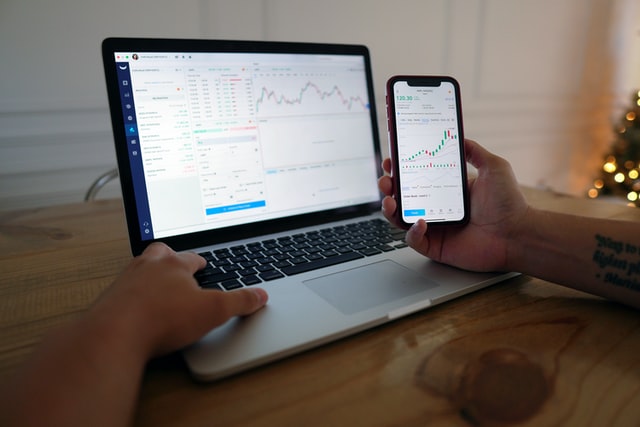Read on for the Passive vs Active Investing comparison. For the casual investor, passive investing is appealing because of its low risks and stable, albeit small, income.
On the other hand, active investing is an attractive option for investors who have more time and resources.
Table of Contents
Passive vs. Active Investing
Choosing an investment strategy can be a daunting task. Here’s a table to help you compare and contrast passive and active investing:
| Feature | Passive Investing | Active Investing |
|---|---|---|
| Investment Goal | Match market returns | Outperform market returns |
| Management Style | Buy and hold a diversified portfolio | Actively trade to exploit market inefficiencies |
| Investment Selection | Track a market index | Research and select individual stocks or funds |
| Costs | Lower fees (typically index funds) | Higher fees (actively managed funds) |
| Required Knowledge | Less knowledge required | Requires more in-depth market knowledge |
| Risk | Lower risk (diversified) | Higher risk (individual stock selection) |
| Time Commitment | Lower time commitment | Higher time commitment for research and trading |
| Performance | Historically matched or slightly trailed market returns | Historically, it underperformed the market average (after fees) |
| Suitable for | Beginners, long-term investors, and those seeking low fees | Experienced investors those who believe they can outperform the market |
Dipping Your Feet In
Investing is all about making your money grow with the help of the market. How that money grows depends on your active or passive approach to your investing. The main difference lies in the growth potential. Active investing tends to excel in the benchmark, whereas passive investing duplicates it.
Neither approach is better than the other. What’s suitable for you depends on your preferences and what you’re available to give in terms of time, energy, and resources. Defining these limits will help you to analyze your projected performance honestly.
With that said, it’s best to work your way up. Starting small with passive investing allows you to monitor growth and decide whether you are comfortable where you are or willing to take on more.
Tracking plays a significant role in how to evaluate your investment strategies. Luckily, tracking has become much easier in recent years, thanks to investment apps. Knowing daily market trends will help gauge whether an active or passive strategy is right for you.
Continue reading to find out more about the two methods.
Passive Investing
Passive investing is the more casual approach. It entails buying and holding long-term assets, making it an excellent option for a retirement fund.
An example of passive investing would be buying stock in a company like Apple and selling it when you see fit. It’s all about holding on for as long as needed and knowing when to sell.
Moreover, buying and selling your stocks is usually a one-time thing. You don’t need to monitor your activity; you only need to set up your assets, and then you’re free to forget about them.
Passive investing has several advantages. For one, holding onto stocks for long periods yields excellent returns. It’s also an affordable, low-risk option that appeals to many people.
With that said, passive investing is not for everyone. It requires patience since most stocks become worth selling after at least a decade. Moreover, passive investing can only duplicate the benchmark; it can’t excel as active investing can.
If you want to make hefty investments, you’re better off using an active investment strategy.
Active Investing
Active investing requires much more effort since the goal is to earn more than average shares. To succeed at active investing, you will need an in-depth market analysis.
The biggest mistake most people make when investing is trying to “beat the market” without any notion of the financial climate. That’s why starting small is essential when beginning to invest actively.
A few bankroll management strategies, such as the Martingale System, can be applied to investing. This strategy used in roulette gaming was created in 18th-century France, and it essentially keeps players in control of their bets. In short, players make small bets and compensate for each turn accordingly.
For example, if a player bets a dollar and loses, they’ll bet two dollars to compensate in the next round. On the other hand, if players bet one dollar and they win, they bet the same amount.
Investors can apply similar principles to their investment strategy to protect themselves from significant risks.
Whether you decide to invest actively or not, hiring a professional to monitor your stocks is paramount. Without constant monitoring and expert opinions, even the best portfolio will fail.
In this case, active investing is best for people who can dedicate the time and resources to ensure their portfolios thrive. With that taken care of, you can rest assured that your stocks will excel in the marketplace.
Investment Apps: A Useful Tool for Tracking Passive Investing
Investment apps have made tracking your passive investing progress easier than ever. These apps allow you to see how your investments are performing in real-time and can also help you set goals and track your progress towards those goals.
Some of the most popular investment apps include:
- Robinhood: Robinhood is a free investment app allowing you to buy and sell stocks, ETFs, and options without paying commissions.
- Stash: Stash is a mobile investment app that allows you to invest in fractional shares of stocks and ETFs. This makes it possible to invest in even the most expensive companies without spending much money.
- Acorns: Acorns is an investment app that rounds up your spare change and invests it for you. This is a great way to save money for the future without even thinking about it.
Other Risk Management Strategies for Active Investing
The Martingale System is just one of many risk management strategies that active investors can use. Other popular strategies include:
- Stop-loss orders: Stop-loss orders allow you to automatically sell your shares if they fall below a certain price. This can help you to limit your losses if the market turns against you.
- Position sizing: Position sizing is the process of determining how much money to invest in each trade. This is important for managing risk, as it helps ensure you don’t lose too much money on any trade.
- Diversification: Diversification is the process of investing in various assets. This helps to reduce your risk, as it means that you are not exposed to the performance of any one asset.
It is important to note that there is no one-size-fits-all risk management strategy. Your best strategy will depend on your circumstances and risk tolerance. It is important to do your research and develop a risk management plan tailored to your needs.
Wrapping Up Passive Vs Active Investing
As mentioned earlier, neither active nor passive investing is better than the other.
Passive investing is an excellent option for someone who wants a profitable return without the hassle of daily monitoring.
On the other hand, active investing works for people willing to put in the time and resources to create a healthy turnout.
INTERESTING POSTS
- Are Online Trading Apps Safe?
- 10 Hand Gesture Emojis You Might Find Useful And Their Interpretations
- Most Effective Cybersecurity Strategy For A Small Business [We Asked 45+ Experts]
- Why A One-Size-Fits-All Approach No Longer Works For Modern Banking Clients
- A Beginner Guide To Cryptocurrency Investment
- Tips And Tricks To Begin Investing In Cryptocurrency
- What Is a Digital Footprint and How Can You Take Control of Yours?
About the Author:
Marie Beaujolie is a computer network engineer and content writer from Paris. She is passionate about technology and exploring new ways to make people’s lives easier. Marie has been working in the IT industry for many years and has a wealth of knowledge about computer security and best practices. She is a regular contributor for SecureBlitz.com, where she writes about the latest trends and news in the cyber security industry. Marie is committed to helping people stay safe online and encouraging them to take the necessary steps to protect their data.
Meet Angela Daniel, an esteemed cybersecurity expert and the Associate Editor at SecureBlitz. With a profound understanding of the digital security landscape, Angela is dedicated to sharing her wealth of knowledge with readers. Her insightful articles delve into the intricacies of cybersecurity, offering a beacon of understanding in the ever-evolving realm of online safety.
Angela's expertise is grounded in a passion for staying at the forefront of emerging threats and protective measures. Her commitment to empowering individuals and organizations with the tools and insights to safeguard their digital presence is unwavering.









